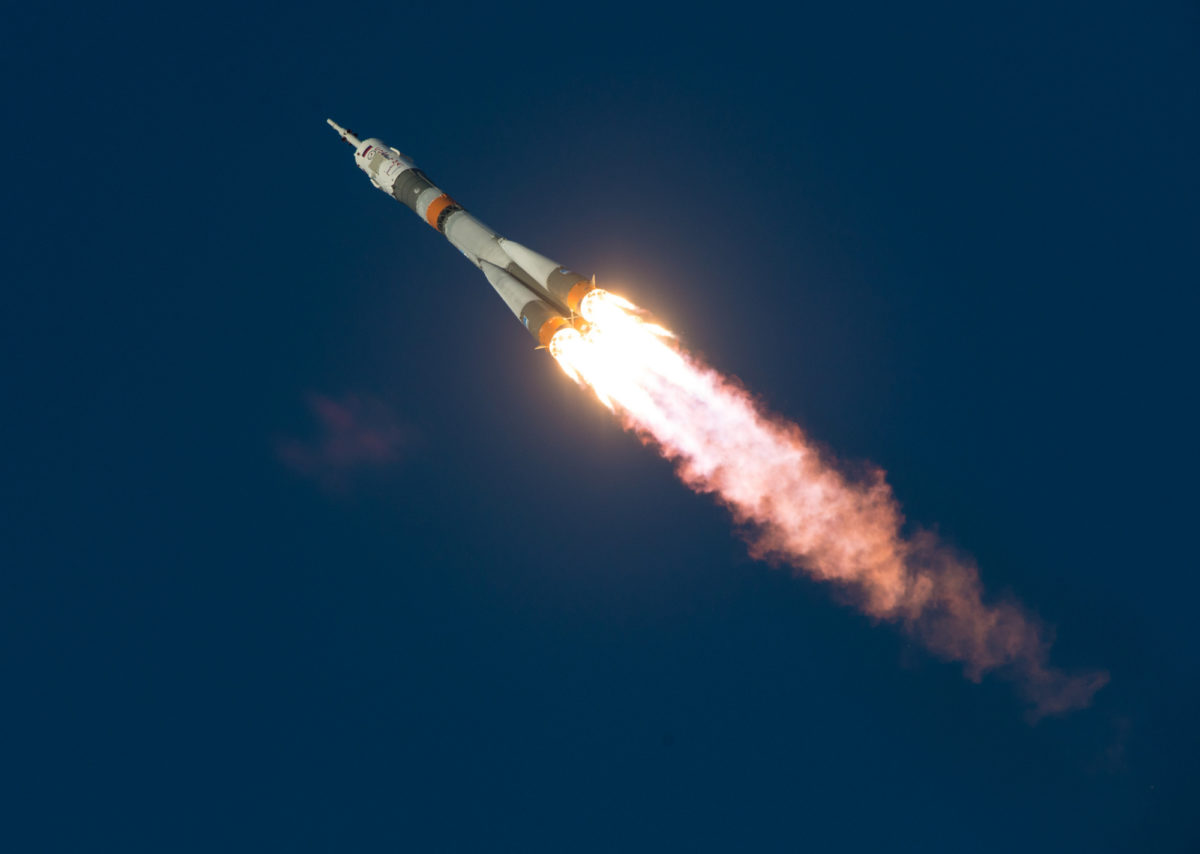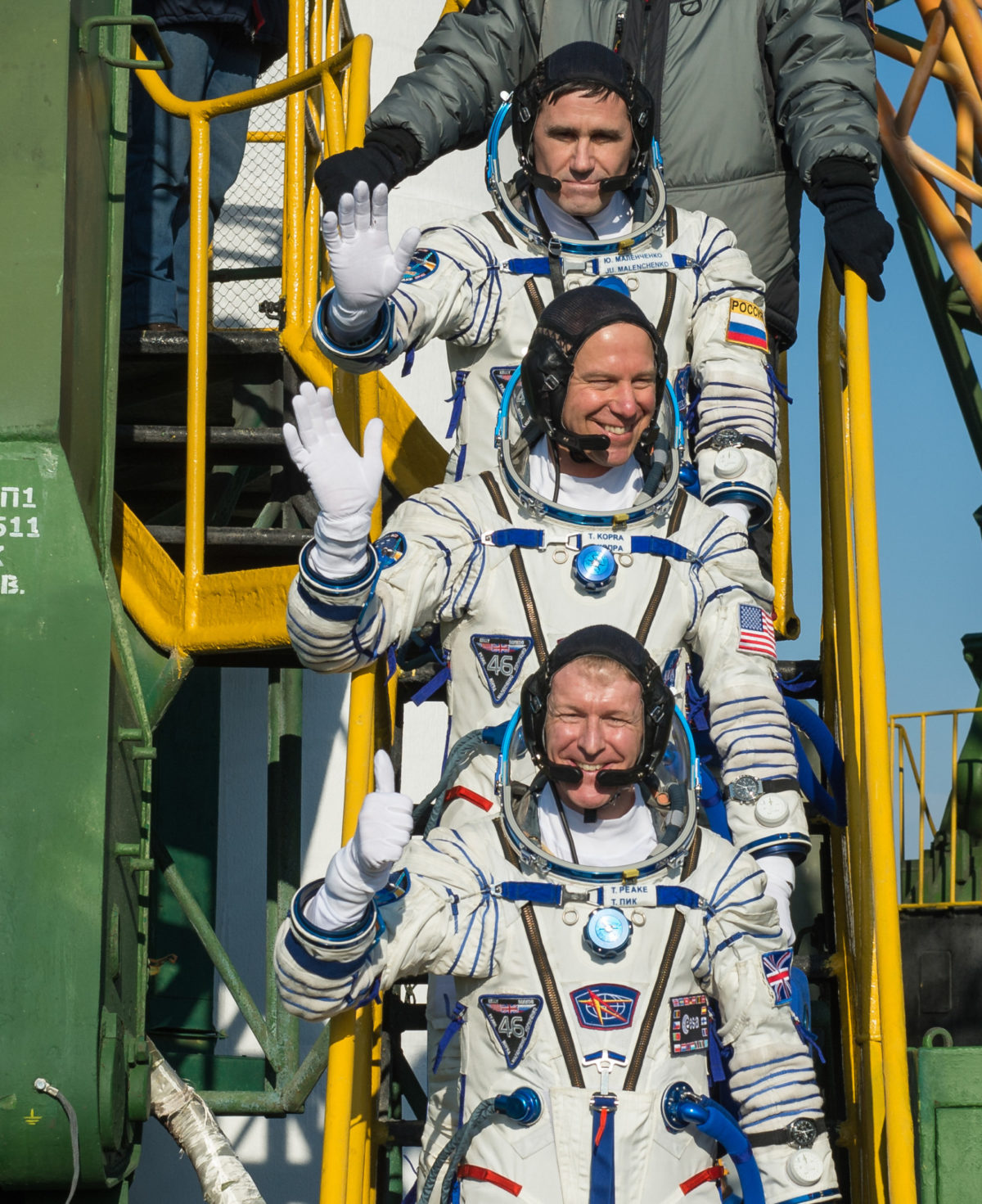Jason Davis • Dec 15, 2015
New Crew Arrives at ISS following Docking Drama
Following a picture-perfect launch and some last minute docking drama, a new three-person crew is safely aboard the International Space Station today. Tim Kopra, Tim Peake and Yuri Malenchenko launched from the Baikonur Cosmodrome in Kazakhstan at 6:03 a.m. EST (11:03 UTC). Six-and-a-half hours later, they pulled into port at the station's Rassvet module at 12:33 p.m.
The Soyuz TMA-19M spacecraft carrying Kopra, Peake and Malenchenko approached the station under autonomous control, performing a flyaround before making a final approach. Rassvet, the targeted docking port, sticks Earthward from Zarya, the first ISS module, and is located on the station's Russian segment.
But with just moments to go before docking, the Soyuz backed away abruptly. Ground controllers announced that vehicle control had been switched to manual mode, with Malenchenko at the controls. Malenchenko is a spaceflight veteran, having served aboard both Mir and the ISS. He also flew on an early space shuttle mission to prepare the ISS for permanent residence.
Malenchenko took a few moments to get a feel for the Soyuz's controls at a distance of about 140 meters, before aligning the vehicle with a set of crosshairs on the station's exterior. Contact and capture was confirmed at 12:33 p.m., just nine minutes behind schedule. It was not immediately clear why the automated docking sequence was aborted.
The flight began six hours earlier in Kazakhstan, following a liftoff from the Baikonur Cosmodrome at 5:03 p.m. local time (6:03 a.m. EST, 11:03 UTC). With the sun creeping low on the horizon, photographers and television cameras captured striking imagery of the Soyuz launch vehicle as it sped to orbit against the backdrop of a dark blue sky.

Astronaut Scott Kelly captured a picture of the launch from space, while live videos cameras aboard the ISS showed the rocket's dusty contrail amid an orange and blue sunset.
#Soyuz blasts through the atmosphere on its way to @Space_Station! #SoyuzTMA19M #soyuzlaunch #YearInSpace pic.twitter.com/mtulhiyiEd
— Scott Kelly (@StationCDRKelly) December 15, 2015Hatches between the Soyuz and station were officially opened at 2:58 p.m. EST. The crew floated into the Russian service module for a teleconference, where they received well-wishes from family, friends and space agency officials.
Along with Malenchenko from Roscosmos, the Russian Federal Space Agency, NASA's Tim Kopra also has prior spaceflight experience. The astronaut was an ISS flight engineer during Expedition 20 in 2009.
Peake, a British astronaut representing the European Space Agency, is making his first spaceflight. While several Brits have flown in space, Peake is the first to be ESA-assigned, as part a new United Kingdom human spaceflight initiative. On Sunday, the UK released its first official national space policy, coinciding with the kickoff of Peake's mission.
Peake plans to make his first spaceflight particularly memorable by participating virtually in the London Marathon. On April 24, 2016, he'll log 42 kilometers on the treadmill inside the station's Tranquility node, using an iPad to display a real-world run through the streets of London. With the station traveling at a speed of 28,800 kilometers per hour, Peake would actually finish the marathon in about six seconds. In reality, he said he was aiming for a time between three-and-a-half and four hours.
Expedition 46 launch Video: NASA
The station is now operating under Expedition 46, which began when Kjell Lindgren, Oleg Kononenko and Kimiya Yui departed on December 11. This marks the final stretch of Scott Kelly and Mikhail Kornienko's one-year mission, which began in March 2015. Kelly, Kornienko and Sergey Volkov will return to Earth on March 2, 2016.
In February, the Expedition 46 crew is expected to receive a SpaceX Dragon cargo vehicle carrying BEAM, the Bigelow Expandable Activity Module. BEAM, a kevlar-lined inflatable habitat, will be attached to the Tranquility module and expanded to a size of about 16 cubic meters. BEAM will remain attached to the station for two years. During that time, astronauts will see how well the module stands up to radiation and the extreme thermal variations of space.
At a NASA Advisory Council Meeting in early December, NASA officials warned that if the SpaceX mission is delayed beyond a certain point, the mission could be pushed to April or May due to crew rotations and unfavorable beta angles. The station's beta angle determines how much time the laboratory spends in direct sunlight, which increases heating on certain components.
Another Expedition 46 experiment will track a year's worth of microbial growth inside the station's U.S. segment. Astronauts will periodically collect bacterial samples for analysis, and scientists will track how the samples change. Certain microbes can threaten crew health and even endanger equipment.
Kopra, Peake and Malenchenko will return to Earth in June after a little less than six months in space.

Let’s Go Beyond The Horizon
Every success in space exploration is the result of the community of space enthusiasts, like you, who believe it is important. You can help usher in the next great era of space exploration with your gift today.
Donate Today

 Explore Worlds
Explore Worlds Find Life
Find Life Defend Earth
Defend Earth



